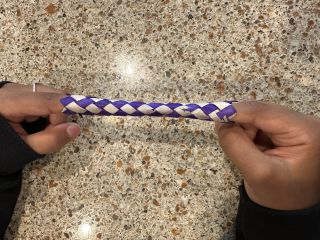Deception
Lying Unmasked
Dishonesty is a common yet complex human behavior.
Posted August 5, 2024 Reviewed by Monica Vilhauer
Key points
- There are generally no foolproof lie detection methods.
- Dishonesty has many disadvantages, and metaphors can help us to visualize the potential impediments.
- Approaching the truth is often difficult, counter-intuitive, and ultimately provides more freedom.
Lying and dishonesty are much more common human behaviors than most people realize. Episodes of untruthfulness actually tend to start in early childhood and are considered by many to be part of several developmental stages. Fortunately, the majority of people are found to tell relatively few and more minor lies; however, lying can be a slippery slope and can be a significant problem for some individuals. Most of us like the idea of living a virtuous, honest life but also like the advantages of sometimes evading the truth ("Sorry, I didn't see your text" or "I had an emergency"). The irony is that we expect others to be fully honest with us yet don't necessarily hold the same standards for ourselves.
Types of lies in our world can range from omissions to commissions, malignant to manipulative, half-truths to whoppers. Lying can occur with strangers, acquaintances, close friends, family, therapists, physicians, and most anyone with whom someone might be in a relationship. Secrets and cheating can also be classified as a type of lying. We live in a current society ripe with lots of misinformation, disinformation, deep fakes, and technologically manipulated visual information; this backdrop of our current world makes the whole foundation of honesty feel much shakier.
The field of dishonesty research is actually complicated and intriguing, and there are some basic truths. Several metaphors are presented as a means of discussing some of the foundational facts.

No Growing Noses
Unlike the story of Pinocchio, whose nose grew every time he told a lie, most humans don't have a really clear-cut indication of dishonesty. Some individuals have a "tell" which indicates potential lying, such as biting their lip or avoiding eye contact, but research indicates that there is no consistent "Pinocchio effect" type of indication that is fool-proof. Lie detector tests can work, but not 100% of the time. Police and investigators utilize some basic rules of looking for deception, but these also can falter. Some dishonesty studies have indicated that there are some ways to get people to be more honest, such as having them sign an honor code or providing more direct connection with the impact of a lie, but there are no methods found to be consistently effective. And most of us are attempting to just be in good, honest relationships with people rather than wondering or continuously evaluating whether or not truthfulness is in jeopardy.

A Recipe With Many Ingredients
Human behavior and motivation is generally made up of a complex combination of factors, and dishonesty is no different. Just as making a cake or a lasagna involves multiple ingredients, understanding why someone may be lying also involves awareness of various factors. People lie for a variety of reasons, including common motives such as impression management, shame, avoidance, minimizing symptoms, autonomy, competitiveness and self-bolstering. The way in which someone was raised and what kind of role models someone had also impacts the degree to which honesty is considered acceptable or palatable. Knowing more about the underlying reasons for a fib does not excuse or undo the lie, but increased curiosity about why someone else (or even oneself) might be lying can allow increased compassion and potential resolution. It’s easy to be angry or frustrated when a lie is revealed, but staying stuck on such emotions alone often shuts down rather than opens up the possibility of shift.

A Massage With a Heavy Jacket
Lies, especially when told repetitively and consistently, end up putting distance between oneself and others. Sometimes this is the intention of the person lying, but often the distance or damage ends up being much more extensive than ever imagined. Getting a massage would be much less effective or positive if someone were wearing a heavy jacket, and relationships end up being much less satisfying when there isn't a basis of steady trust. Taking off the jacket can be difficult and can feel like overwhelming vulnerability, but this approach with self and with others generally leads to much deeper and more meaningful relationships. It can be difficult to say “I’m sorry I told you that had happened when it hadn’t” or “I need to share some facts about myself that are hard to talk about,” but this generally tends to bring people closer rather than tear them apart.

Deeper into the Forest
When one lie is told, there are often other lies that follow in order to cover over the initial lie. This may feel like a fix but ends up being more of a short term cover up and can lead to more dishonesty in the long run. If someone were lost in the forest but could see the clearing from where they had come off in the distance, they would hopefully turn towards the clearing and begin to backtrack, retrace their steps or at least maintain the clearing within their vision in order to find their way back. Continuing to tell lie upon lie is like moving away from the clearing and getting deeper into the dark, confusing, avoidant forest. The path gets more tangled and treacherous as truth is avoided. The only way to truly be free of the difficulty is to move away from the layering of lies and instead towards the light of legitimate honesty. Sometimes full openness doesn’t occur until there is a significant event or a dramatic reveal, but most everyone agrees that the sooner the better.

Finger Traps
The ultimate healing from a big or small lie — or even from a longer-term habit of lying — involves facing the difficulty directly. Like the children's toy known as the Finger Trap (where moving fingers outwards tightens the trap but, counterintuitively, moving them inward enlarges the openings to free the fingers), someone moving towards the truth or the revelation of the previous fib is what will ultimately provide someone more freedom. Rather than someone continuing to lie about something about which they are being questioned or feeling immense guilt, the better response would be for someone to face the fib more openly and correct it as soon as possible ("I actually need to explain that a bit better" or "I need to share details about what actually happened"). The temptation to keep building upon the lies occurs because it appears seemingly simpler and easier, but the grip that the emotions have tend to tighten rather than release in the long term. Many of us resist and hold back from doing hard and uncomfortable things, but approaching the hard and uncomfortable is where the growth and progress can often best occur.


